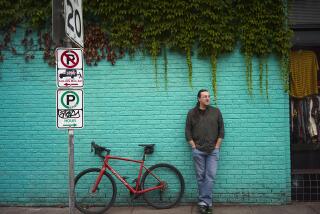Cycling has a vacancy for seven Tour de France titles
With Lance Armstrong likely to be stripped of his seven Tour de France titles, the keepers of the record books face this question: Who should get them?
The U.S. Anti-Doping Agency announced Friday that it was taking away the victories, though the endgame remained unclear because Armstrong’s attorneys contend that only the sport’s governing body, the International Cycling Union, has that authority.
In any case, throwing out the record books would be far easier than to trying to rewrite them. Doping was business as usual in professional cycling during the era of Armstrong. More than 60% of the top-10 finishers in the Tour from 1999 to 2005 — the years that Armstrong won — have been implicated in doping scandals at some point in their careers.
Former Armstrong teammate Frankie Andreu said he does not believe any replacement champion should be selected with Armstrong’s seven years of titles voided.
“Many of those riders would be content to stay in those spots they were in, because a lot of guys were doing stuff,” said Andreu, who rode with Armstrong from 1992 to 2000. “Just because No. 1 is taken out, it doesn’t mean Nos. 2, 3, 4 and 5 weren’t up to something too....
“You should just put an asterisk next to it and move on.”
Travis Tygart, chief executive of USADA, said the cycling union would ultimately decide if the Tour titles would be reassigned.
“When a whole culture doesn’t follow the rules, it’s messy...,” he said. “But the truth has to be revealed so all other athletes can move forward.”
Doping has long been part of cycling. The drug EPO, which boosts red blood cell production and the body’s ability to deliver oxygen to the muscles, came on the market in 1987 and quickly gained popularity among endurance athletes who wanted to cheat. It wasn’t until 2000 that scientists developed a test for it.
Armstrong began winning his titles as cycling began ramping up its efforts to catch dopers. Cycling officials argued that the number of stars being caught meant the sport was getting cleaner. To critics, however, it was proof that doping had become endemic — and a sign that many riders were still beating the tests, which are far from foolproof.
Armstrong, who has never failed a drug test, had been fighting allegations for years.
In February, federal prosecutors ended a two-year grand jury investigation of Armstrong. But USADA took up the case and in June informed Armstrong — who had retired from cycling to take up triathlons — that it intended to launch proceedings against him.
The agency claimed that it had more than a dozen witnesses who had agreed to testify against him and provide compelling evidence that he had used EPO, blood transfusions, testosterone and human growth hormone between 1999 and 2005.
Armstrong went to court in attempt to block the case, saying the system was rigged against him. But on Monday, a federal judge said the case could proceed. Three days later, Armstrong said he was tired of fighting and would not contest the charges.
“There comes a point in every man’s life when he has to say, ‘Enough is enough,’ ” Armstrong, 40, wrote in a statement.
“For me, that time is now. I have been dealing with claims that I cheated and had an unfair advantage in winning my seven Tours since 1999.”
On Friday, Armstrong tweeted that he planned to ride in a mountain bike race and run a marathon this weekend, events not governed by USADA.
He maintains that he has never doped.
Whatever the truth, one could argue that the playing field was level.
In 2005, for example, eight out of the top 10 riders in the Tour have had some run-in with drugs.
Second place went to Italian rider Ivan Basso, third to Germany’s Jan Ullrich and fourth to Spain’s Francisco Mancebo. All three men were barred from the Tour the following year after a Spanish police investigation linked them to a doping operation involving several prominent cyclists. Basso served a two-year suspension. Ullrich retired and was later found guilty. Mancebo, who briefly retired and then resumed his career on lower-level professional teams, was never charged.
In fifth place was Alexandre Vinokourov, the rider from Kazakhstan who two years later was caught infusing himself with his own blood.
American Levi Leipheimer was sixth. It is believed that he is among several former teammates of Armstrong who had been set to testify in the USADA investigation that doping was pervasive on their team. His only positive drug test was for an over-the-counter medicine in 1997, which his family said he had taken for his allergies.
The seventh-place rider was the Netherlands’ Michael Rasmussen, who was leading the 2007 race when his team kicked him out after he fell under suspicion for doping. He had lied about his whereabouts to avoid a drug test earlier that season.
In ninth place was Floyd Landis, the American who was stripped of his 2006 victory, failed in his fight against doping charges, and then admitted that he had used performance-enhancing drugs for much of his career.
His troubles are not over. In a San Diego courtroom Friday, Landis agreed to repay the 1,765 people who had donated $478,354 to help him fight the doping charges.
More to Read
Go beyond the scoreboard
Get the latest on L.A.'s teams in the daily Sports Report newsletter.
You may occasionally receive promotional content from the Los Angeles Times.












